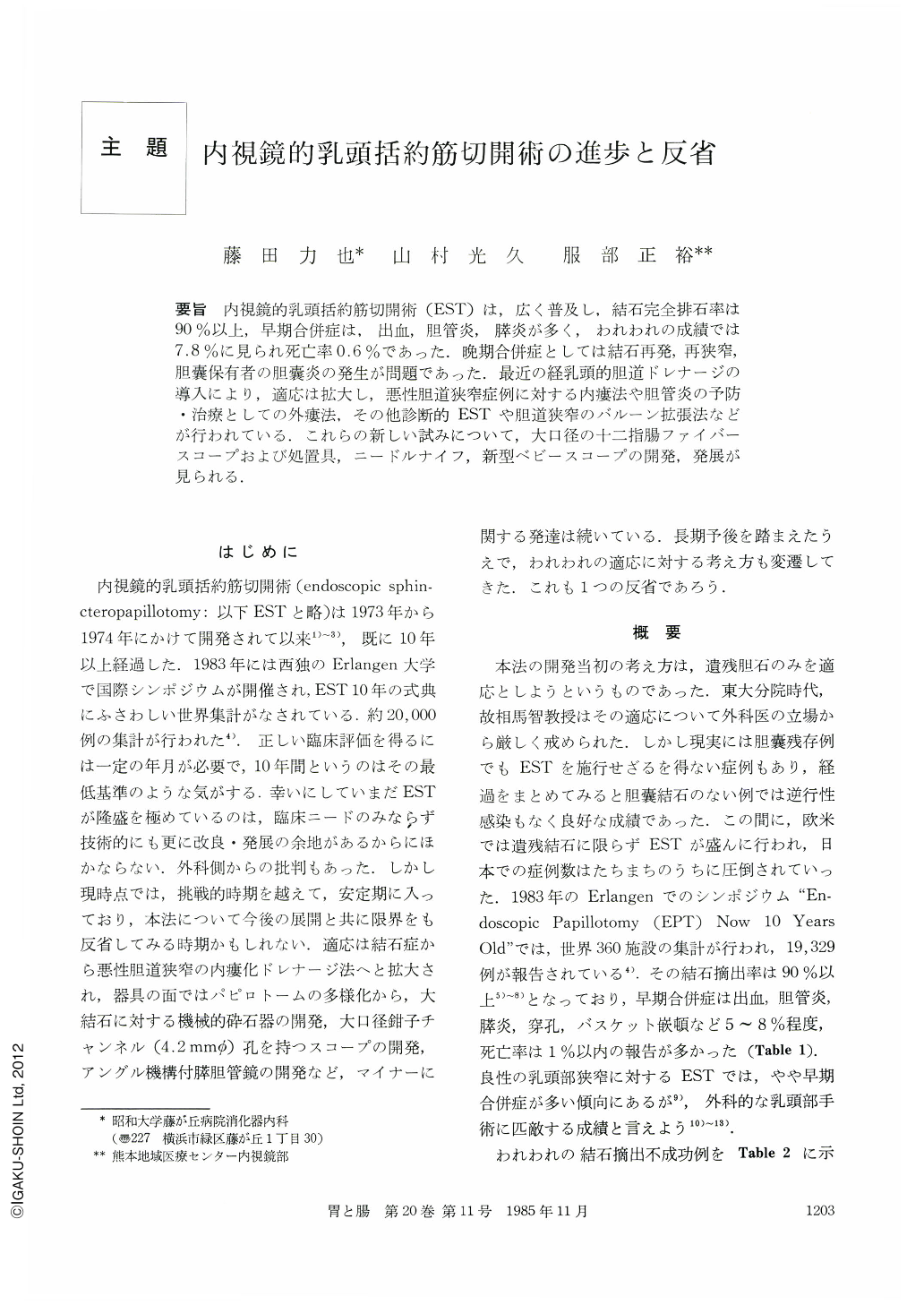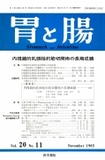Japanese
English
- 有料閲覧
- Abstract 文献概要
- 1ページ目 Look Inside
要旨 内視鏡的乳頭括約筋切開術(EST)は,広く普及し,結石完全排石率は90%以上,早期合併症は,出血,胆管炎,膵炎が多く,われわれの成績では7.8%に見られ死亡率0.6%であった.晩期合併症としては結石再発,再狭窄,胆囊保有者の胆囊炎の発生が問題であった.最近の経乳頭的胆道ドレナージの導入により,適応は拡大し,悪性胆道狭窄症例に対する内痩法や胆管炎の予防・治療としての外痩法,その他診断的ESTや胆道狭窄のバルーン拡張法などが行われている.これらの新しい試みについて,大口径の十二指腸ファイバースコープおよび処置具,ニードルナイフ,新型ベビースコープの開発,発展が見られる.
Endoscopic sphincteropapillotomy (EST) was originated in 1973. Since then, about 20,000 cases were collected in the world. Table 1 showed the result of EST, including early complications, late complications and mortality rate.
The most common early complications were bleeding, cholangitis, pancreatitis, perforations, and basket impaction. The mortality rate was below 1%. The causes of failure of stone extraction were intrahepatic stonea and big stones. (Table 3)
The problems of follow up study after EST were recurrent stones and cholecystitis who had a gallbladder in place. Among the cases of recurrent stones, the main cause of recurrence was misreading of cholangiogram after EST, due to poor visualization. So, we are now using the balloon catheter to take a fine cholangiography. Seven patients occured cholecystitis among 135 patients with gallbladder in place. All these 7 patients had gallstones. The patients, who received EST and had gallbladder without stones, had no problems during follow up period. It was interesting that we observed three patients whose gallstones disappeared or decreasing stones. It may indicate the possibility that gallstones pass spontaneously into the duodenum.
The indication of EST enlarged recently. Bilioduodenal endoprosthesis (Fig. 1, Fig. 2) were collected 263 cases in Japan in 1984 (Table 3). Nasobiliary drainage (Fig. 3) is very convenient procedure, which prevents cholangitis after EST. Besides, it can drain from the pancreatic duct (Fig. 4). Balloon dilatation is useful for benign bile duct stricture (Fig. 5). We tried the combination theraphy of EST and percutaneous transhepatic choledochoscopic lithotripsy (PTCL) for big stones and even for basket impacted case (Fig. 6). About the development of instruments, the papillotomes became varied, for example, shark fin type, Hachisu type and needle knife (Fig. 7). Balloon cholangiography revealed the fine cholangiography after EST (Fig. 8). The lithotripsy is developing, but it is not enough to break stones properly. We are using a mechanical lithotripsy, of which diameter is 3.5 mm (Fig. 9, 10). A new baby scope has up and down angulation and forceps channel (Fig.11), through which we can take stones under direct visualization. (Fig. 12)
Upon reflection, so far, the main indication of EST was residual stones, 10 years follow up was not long enough to define the late effect after EST. We must collect long term follow up cases from now on.

Copyright © 1985, Igaku-Shoin Ltd. All rights reserved.


